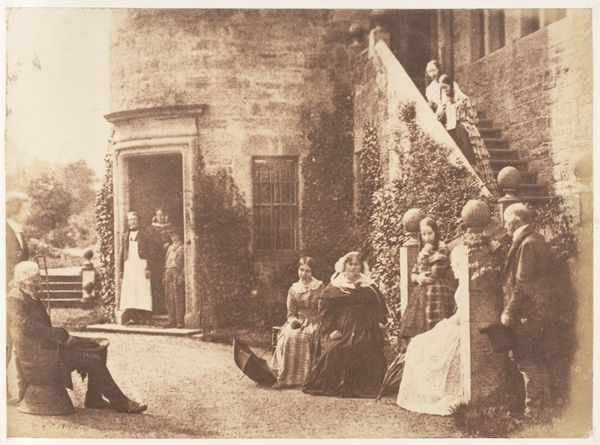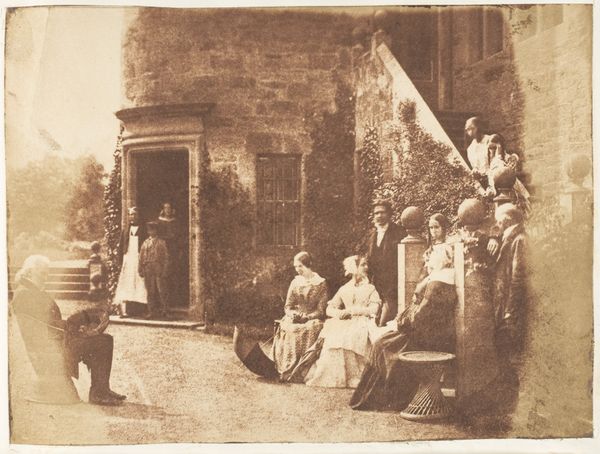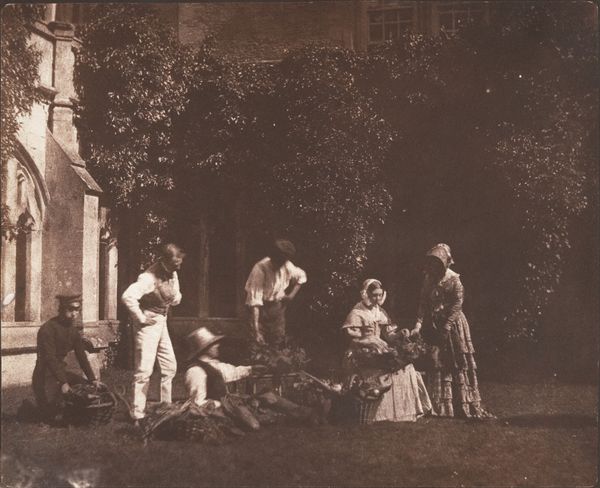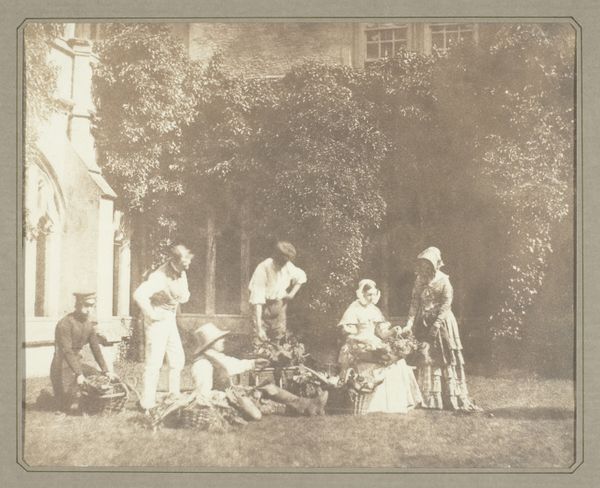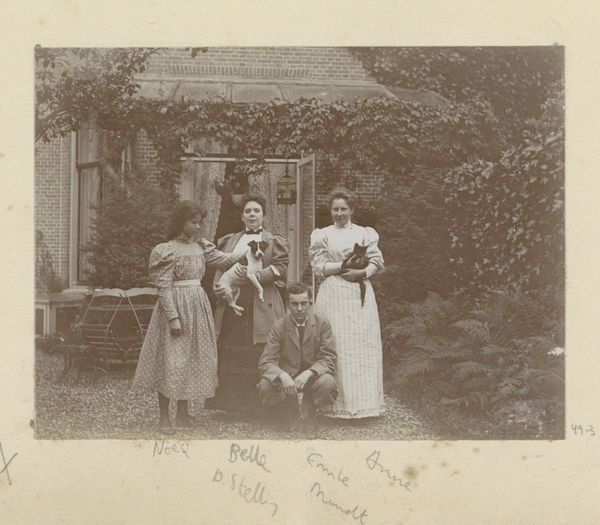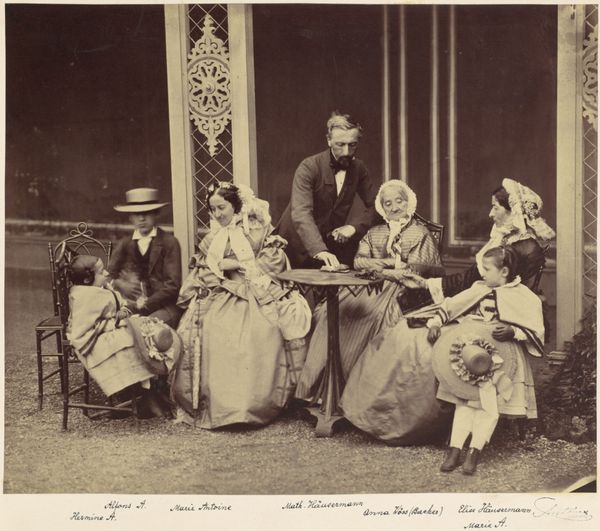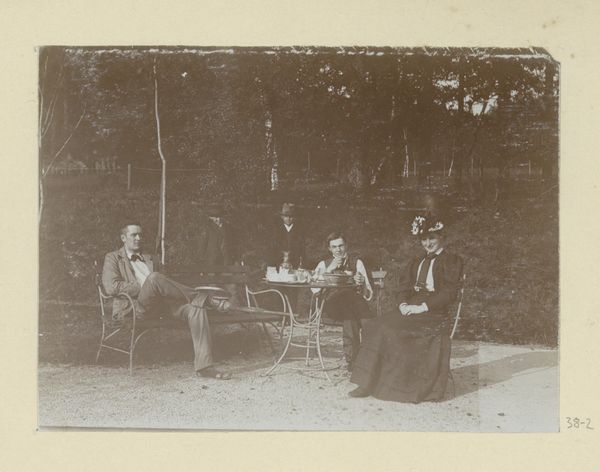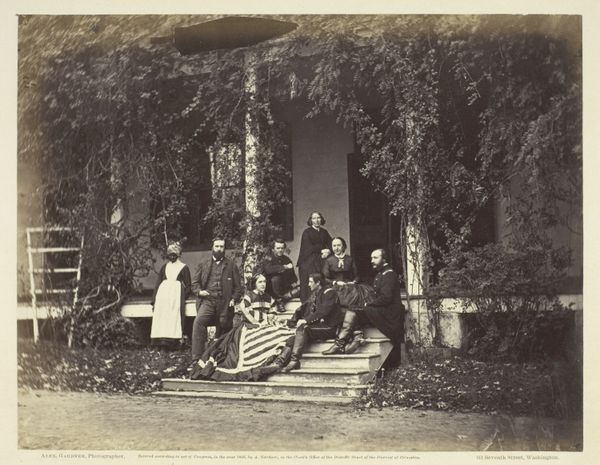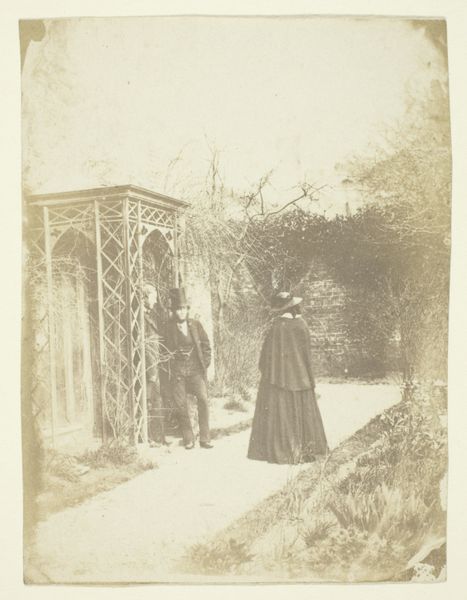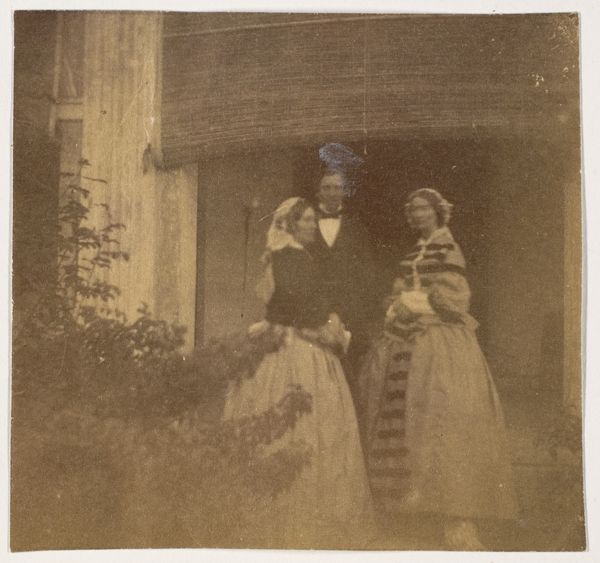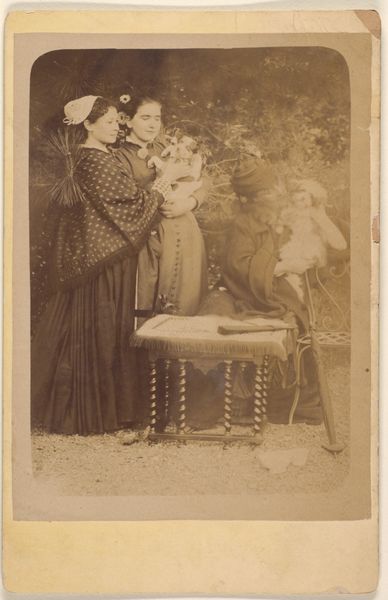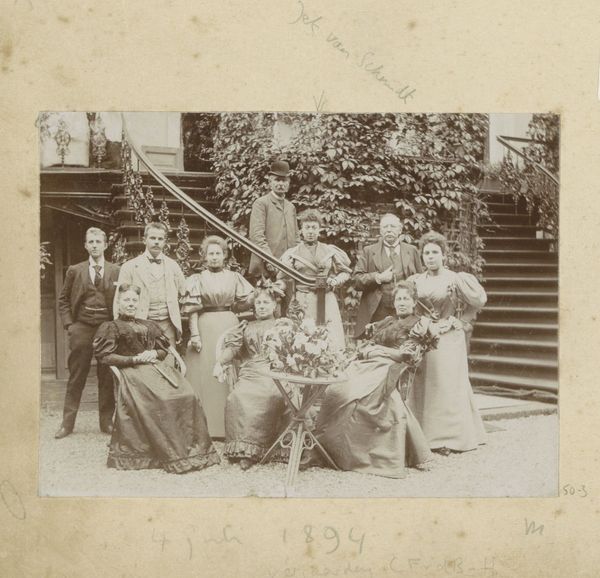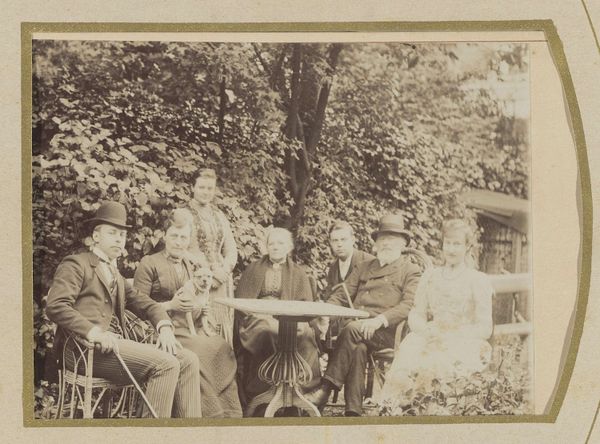
print, paper, photography
#
portrait
#
16_19th-century
# print
#
paper
#
photography
#
group-portraits
#
genre-painting
Dimensions: 15.2 × 20.9 cm (image/paper)
Copyright: Public Domain
Curator: David Octavius Hill created this captivating print, “Lord Cockburn at Bonaly,” sometime between 1846 and 1847. It's currently housed right here at The Art Institute of Chicago. Editor: Wow, there’s something incredibly still about this image. It almost feels like everyone’s holding their breath. Like they are holding very still for the photographer and almost scared. What is that creamy sepia tone doing? It gives an intimate and somewhat spooky air to it all. Curator: This is largely due to Hill’s use of calotype, an early photographic process, which produces these softer, less defined images on paper. It really transforms our reading of 19th-century portraiture. It's so radically different from the formal painted portraits we often see, as it invites more immediate responses. Editor: Definitely. There's a whole story unfolding. You've got what seems like half of the characters watching the other half going upstairs – some about to leave, while others sit. A hierarchy, like a photograph of guests at the manor; a great day. But there is this melancholy feeling. What does that staircase really symbolize? Where does it lead these ghosts in their finery? Curator: Well, Lord Cockburn was a prominent Scottish judge and writer. He was a key figure of the Scottish Enlightenment, with strong ties to cultural and intellectual circles. That, combined with the location makes me consider Hill's approach to representing Scottish identity and its historical figures. Editor: Hmm, "identity". I see them as almost props for his manor, which also looks half-finished, though it’s clearly grand! Did he ask them to dress up, and tell them to ‘be’ an identity? What is everyone else feeling but Lord Cockburn? We can imagine him feeling very at home! Curator: It really does speak to the performative nature of these early photographs. Everyone seems consciously aware of the camera, highlighting how social roles and historical narratives intertwine here. This awareness gives us a glimpse into the controlled image-making of the era. Editor: Looking at the photo as it fades away, the whole scene begins to dissolve… like memories. Very well captured. This fleeting nature makes this photo more special, like the capture of one rare day. It really tells more about us than it tells us about them. Curator: Absolutely. Hill's photography offers a unique lens through which to explore the historical, social and aesthetic values of the period. Editor: A dreamy, fading photograph for reflecting how photographs also will become distant moments of recall as history happens.
Comments
No comments
Be the first to comment and join the conversation on the ultimate creative platform.
